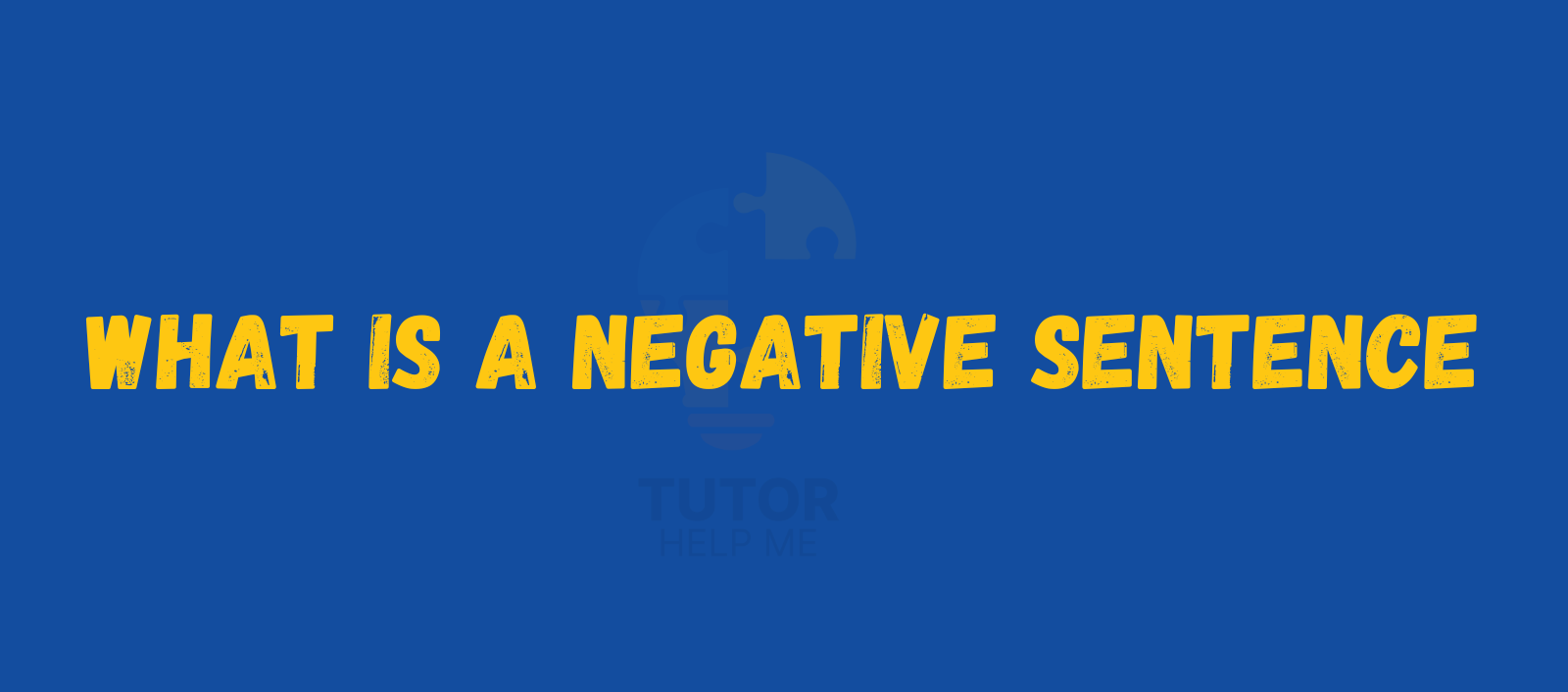A negative sentence tells us that something is not true or did not happen. It often uses words like “not,” “no,” “never,” “nothing,” or “nobody.”
Learning how to form negative sentences correctly is important for clear communication in both speaking and writing.
In this blog, you’ll learn what is a negative sentence, different ways to form it, and easy examples of each.
What Is a Negative Sentence?
A negative sentence is a sentence that states something is false or denies something. It often includes negative words like not, no, never, nothing, and nobody.
Example,
- I do not like broccoli.
- She is not coming to the party.
- They have no idea what happened.
- He never answers his phone.
- We found nothing in the box.
“Learn English Grammar with our 1-On-1 English Tutors.”
Ways to Form a Negative Sentence
There are five common ways to create negative sentences:
Forming Negative Sentences by Adding ‘Not’
The most common way is by adding “not” after an auxiliary verb (am, is, are, do, does, did, have, etc.).
Examples:
- She is not coming to the party.
- I do not like coffee.
- They have not finished their homework.
- We did not hear the news.
- He was not ready.
Forming Negative Sentences Using ‘No’, ‘Nothing’, ‘Nobody’, ‘None’, ‘Nowhere’
You can also use negative words like no, nothing, nobody, none, nowhere to form negative sentences without using “not.”
Examples:
- There is no milk in the fridge.
- Nobody knows the answer.
- I found nothing in the box.
- None of the students were absent.
- She went nowhere yesterday.
Using Contractions
Contractions are shortened forms combining auxiliary verbs and “not,” making sentences sound more natural in speech.
Examples:
- I don’t like spicy food.
- She isn’t coming with us.
- We haven’t finished yet.
- They weren’t at home.
- He doesn’t play football.
Negating Interrogative Sentences
You can also form negative questions by adding “not” to interrogative sentences.
Examples:
- Isn’t she your friend?
- Don’t you like pizza?
- Hasn’t he arrived yet?
- Can’t you help me?
- Aren’t they coming today?
Double Negatives
Double negatives happen when two negative words are used in the same sentence, usually to create emphasis (but sometimes incorrect in formal English).
Examples:
- I don’t know nothing about it.
- She didn’t see nobody there.
- We can’t find no solution.
- He never said nothing important.
- They won’t go nowhere tonight.
Note: Double negatives are common in casual speech but are avoided in formal writing because they can confuse the meaning.
why Choose Tutorhelpme?
- Experienced English Tutors – Specialists in grammar, writing, speaking, and exam skills.
- Personalised Learning Plans – Lessons designed to fit your learning speed, needs, and goals.
- Flexible Scheduling – Book lessons at times that suit you, with easy online access.
- Affordable Prices – Get high-quality tutoring without high costs.
- 1-on-1 Attention – Focused support to help you improve faster and build confidence.
- Progress Tracking – Regular feedback and measurable improvements to help you stay motivated.
Whether you’re working on negative sentences, preparing for exams, or improving daily conversation, TutorHelpMe is here to help you succeed.
Conclusion
Negative sentences are important for expressing what is not happening or what is untrue. There are many ways to form them—by adding “not,” using negative words, or negating questions. By understanding and practising these forms, you’ll sound more natural and confident in English.
Read More Conditional Sentences | Definition, Types and Examples
FAQ’s
What is a contraction in negative sentences?
A contraction combines the auxiliary verb and “not,” such as don’t, isn’t, hasn’t, or won’t.
How do double negatives work?
Double negatives use two negative words in one sentence, often creating confusion or informal emphasis.
Are double negatives correct?
In formal English, double negatives are incorrect because they make the sentence unclear or confusing.
What is negating an interrogative sentence?
It means turning a question negative, like: Isn’t she coming?
What is the difference between “no” and “not”?
“No” is used before nouns; “not” is used with verbs or adjectives to negate actions or qualities.

